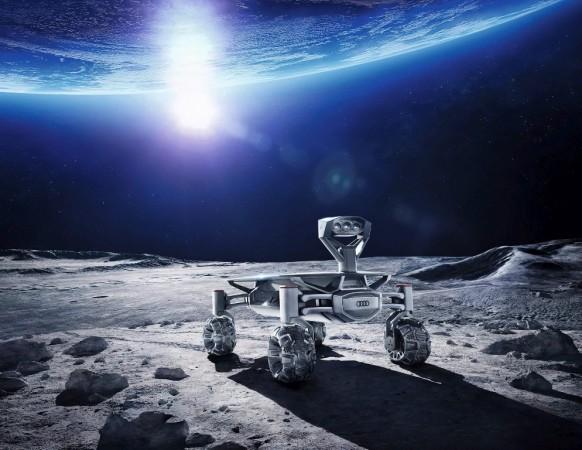
German carmaker Audi and fellow space travel team Part-Time Scientists announced their partnership in early 2015 for bringing together technological expertise of both partners in getting a rover to travel on the moon. The partnership under the Google Lunar XPRIZE competition is in its final stages, with plans to set off to the moon in late 2017.
A group of 16 Audi experts has been supporting the Part-Time Scientists team in technical areas and has optimised the rover for the lunar mission. They have been working on the rover's all-wheel drive power distribution, optimising its electronics and contributing piloted driving expertise to the development process.
In order to boost its stability, the engineers and designers made the rover and its wheels larger. They also reduced its weight from 38 to 30 kg by using aluminium 3D printing. Audi lunar quattro will have four cameras. It will use them to examine objects and take 3D and 360°pictures.
Before the mission in the end of 2017, the team will conduct stress testing of the two Audi lunar quattro vehicles and the landing probe. It will simulate the entire mission in the Middle East over the next few months, and is now performing some final fine-tuning.
"We are proud that we have given the moon rover important aspects of the four rings' DNA: It is a quattro, has an e-tron battery on board, drives in piloted mode and offers an intelligent mix of materials," Michael Schoffmann, head of Audi Transmission Development and Development Coordinator of the Audi lunar quattro, said. "The collaboration with the Part-Time scientists is also very enriching for us: We are breaking new technological ground with the Audi lunar quattro and can learn much about how automotive components behave in extreme conditions."

















![India Auto Roundup: Maruti Suzuki, Mahindra have exciting launches in November [details here]](https://data1.ibtimes.co.in/en/full/805520/india-auto-roundup-maruti-suzuki-mahindra-have-exciting-launches-november-details-here.jpg?w=220&h=135)